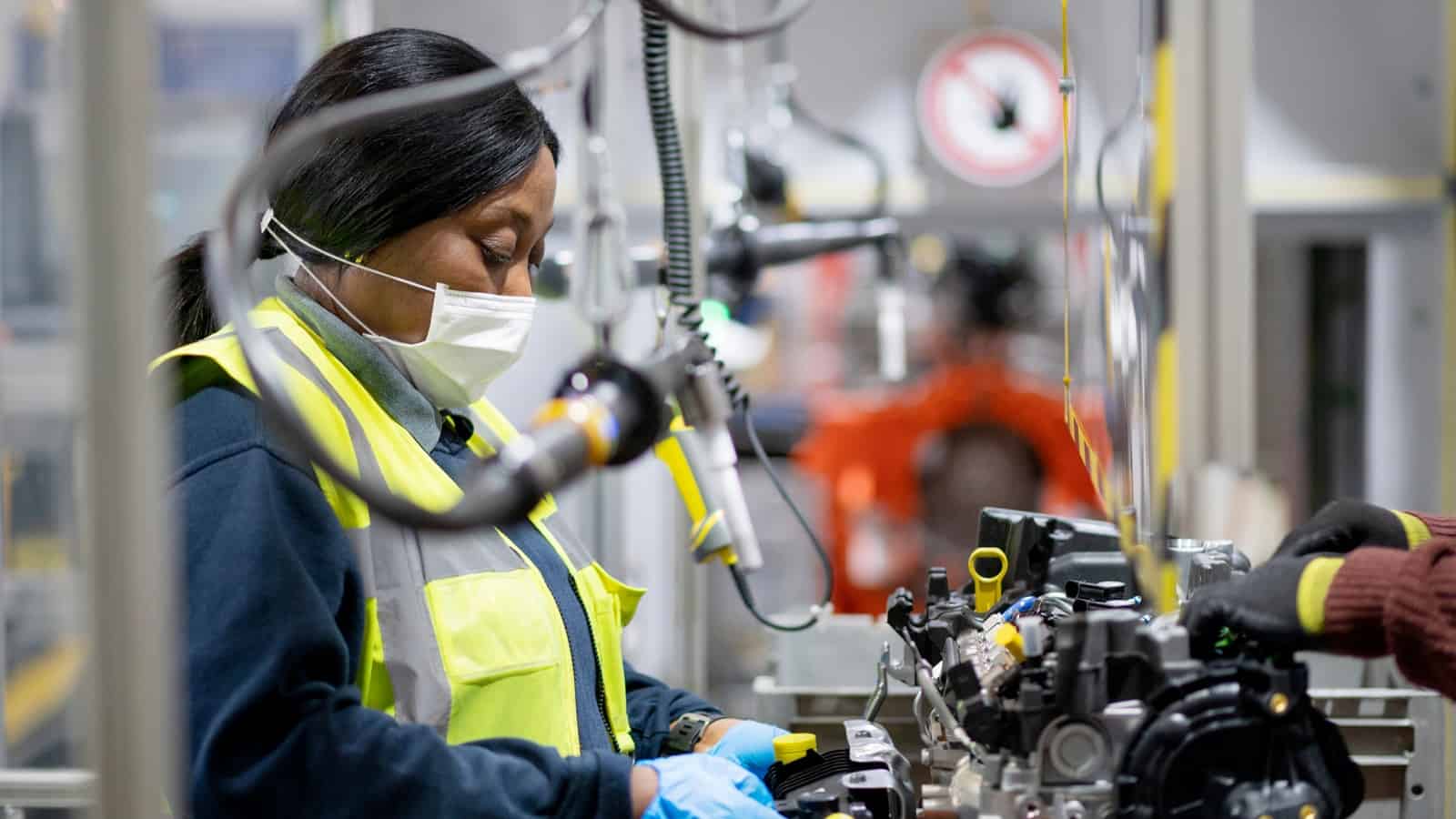How Ford Made Its Factories Talk

The term “Symbiotic Simulation” might sound like a science fiction plot point, but in fact, it’s an incredibly useful framework that makes manufacturing processes more efficient by connecting digital tools with real-world facilities. Working with key partners, the Powertrain Manufacturing Engineering group at Ford Motor Company conceptualized and delivered this software solution. And this month, at the Manufacturing Leadership Council’s 2020 ML Awards, the MLC recognized the company’s work in developing it.
What it is: Symbiotic Simulation—or SymSim—is an evolution of discrete event simulation, which is when experts experiment on a computer model representing a facility in order to find improvement opportunities. Usually, that involves manually downloading data, reformatting it and pushing the data into a model ready for optimization.
SymSim shortens that process by making a direct connection to the data that is produced by facilities, pulling data out automatically to help the company understand what’s happening and how its goals can be accomplished more efficiently.
Why it matters: First, connecting the digital model more closely to the physical facility improves the quality of the simulation, which leads to better decisions and results. The second benefit is time. Traditionally, downloading the data, cleaning and processing it would take a week—but the SymSim process can do it almost instantaneously.
The long road: The idea was hatched in 2015, in a Ph.D. project by a member of the company’s PTME group. Once the Ph.D. project ended, the PTME group decided to build it out further, then added a few collaborators: software partner Lanner Group, as well as the University of East London and a team at sustainable manufacturing consultancy HSSMI.
The benefits: In general, the project has helped to improve efficiency and deliver savings by reducing overtime and eliminating costly delays. While Ford just launched the proof of concept in 2019, the project has already saved more than 1,000 hours of engineering time and around $2.7 million. In one Ford plant that was launching a brand-new engine assembly line, the company ran a daily meeting to show—in just 15 minutes—where the bottlenecks had been the day before.
The last word: “Sometimes it’s necessary to revolutionize,” said Ford Simulation & Process Optimization Leader Michael Higgins. “With these technologies, you can get stuck with making incremental changes. Sometimes you need to step back and ask how you can improve processes and leverage technological improvements on a grand scale. That’s exactly what we did.”
Along with many other leaders in manufacturing, Higgins will be one of the speakers at Rethink, the Manufacturing Leadership Council’s virtual summit on navigating disruption and seizing opportunities in the digital era. The summit will take place on October 27 to 29, 2020, and you can register here.
